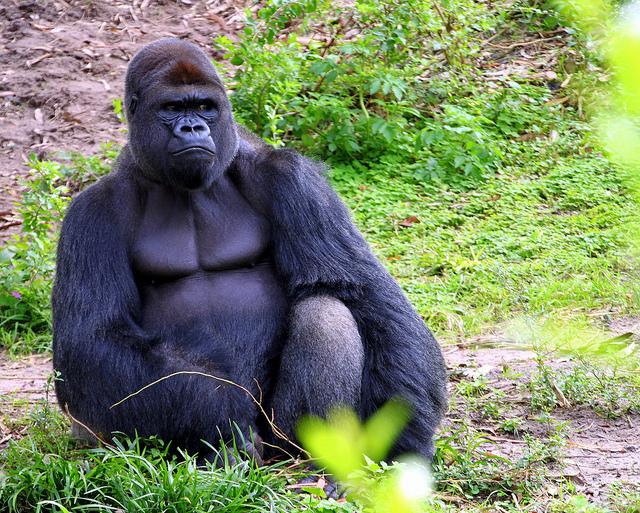Having started his career in cognitive psychology, a University of Wisconsin researcher never thought he would be working with one of the most well-known gorillas in the world — but that changed when an opportunity arose at The Gorilla Foundation.
Before coming to UW’s department of psychology to study under UW professor Gary Lupan, whose lab studies the interaction between language and other cognitive processes, Marcus Perlman researched Koko the Gorilla.
Prior to working with gorillas, Perlman said he hadn’t planned to conduct research with primates. He attended his graduate years at University of California Santa Cruz and later lectured about cognitive science at UC Merced.
“The way it all happened was pretty amazing,” Perlman said. “I studied cognitive psychology in school but I never thought I’d end up doing research with gorillas. I was just lucky enough to know a friend who worked at The Gorilla Foundation helped me with the opportunity.”
Through reviewing 71 hours of video footage of Koko, Perlman noticed the gorilla picked up learned behaviors involving a unique use of vocalization and breathing, something gorillas typically don’t do.
“These are behaviors that are commonplace for people, but it was long believed that nonhuman great apes, such as gorillas, chimpanzees and orangutans, were incapable of controlling vocalization and of learning new vocalization,” Perlman said.
The previous notion was that humans were the only primates capable of speech, Perlman’s observations could change that.
Although most apes don’t exhibit behavior similar to Koko’s, Perlman said all great apes probably have the capacity to execute similar actions.
While partly due to Koko being a more gifted ape, the environment she lives in sets her apart from other apes. But her case further proves how capable of learning apes are.
For 43 of her 44 years, Koko has lived with humans. This lifestyle has allowed her to observe her keepers and with time, learn the behaviors.
For example, Koko can cough on command, tuck a phone in the crook of her elbow and grunt as if she were talking on the phone. She can also play wind instruments such as the recorder and harmonica.
“Koko has shown that she has voluntary control and that she has the capacity to learn new behaviors that involve vocalizing,” Perlman said. “By producing behaviors that involve her vocal track, such as her vocal cords and voice box, she displays a conscious control of breathing.”
But even though these observations of Koko are important to the studies of gorilla and human interaction, Perlman said it’s hard to do experiments with these behaviors because they tend to be fairly idiosyncratic and contextualized.
Perlman said as researchers document more cases where they see apes imitating these types of humanlike behaviors, they can learn more about their capacity to perform them.
Perlman said it is clear that learned behaviors like Koko’s are acquired during their experience with humans. But whether it comes through time in training or observation is unclear. If anything, Perlman said it is a mix of both factors impacting Koko’s behavior.
“The more we research, the more we learn,” Perlman said.














